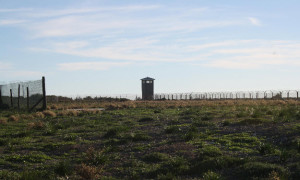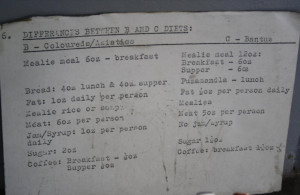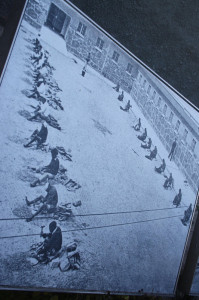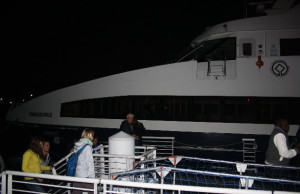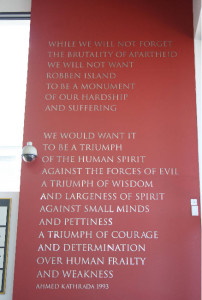Tag Archive
activity architecture art artist building Canada children city CostSaver downtown drive i-95 entertainment Europe event exhibit family festival Florida food fun historic History landmark local Museum music Nature New Zealand Ontario roadtrip sculpture Seattle show sights sightseeing tour tourist Trafalgar travel travelblogger view Washington Washington State water world
US: Newburyport, MA – Xmas Tree Bonfire Party with Music, S’mores & Flashlight Treasure Hunt
This is no ordinary Bonfire, it’s a 3-story community bonfire where Greater Newburyport’s residents burn their well-loved Christmas trees, and boy can those babies burn and it gets hot, real hot! 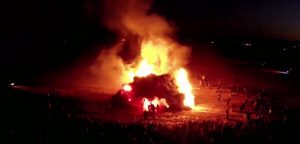
In honor of the original purchase of Newbury, MA in 1701, It’s the 6th Annual Christmas Tree Burn Fundraiser/ Old Newbury Bonfire to benefit the Newbury Volunteer Fire Department. Why not support this community and enjoy the local entertainment with music, games, food and fun at an event that is becoming a Greater Newburyport Winter tradition.
In addition to the bonfire, there will be tours of the 17th century stone and brick manor house at Spencer-Peirce-Little Farm, and you can participate in a flashlight treasure hunt and other children’s activities. Enjoy great food and drinks from local businesses, roast marshmallows or make S’mores. At 5 PM there’s an auction to be one of the two official bonfire lighters. Other prizes include a ride to school on a fire truck, cords of wood, local art and other surprise. Admission FREE, food and drinks available for purchase. Parking: $5 at Spencer Peirce Little Farm.
Location: Spencer Pierce Little Farm – 5 Little’s Lane, Newbury, MA 01951
Date: Sat, Jan 14, 2017
Time: 3 pm – 9 pm w/ Bonfire Auction at 5 pm, lighting to follow – See more at:
newburyport.com/old-newbury-bonfire/
Tel: 978-462-2282, 978-462-2634
For Regional Accommodations, Restaurants & Attractions: newburyportchamber.org
newburyport.com
US: Join Fabien Cousteau During His 31-day Underwater Mission
Grandson of Jacques Cousteau, Fabien Cousteau was entranced by his grandpa’s films and underwater life. Right now he’s in the Florida Keys with a 5-person crew making a documentary and doing science experiments about the ocean.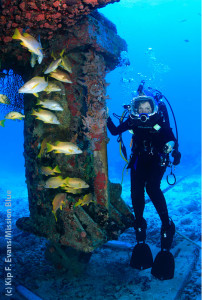
They will live there for 31 days in the 37-sq. ft Aquarius Reef Base, a school bus size laboratory which is 18 metres below the ocean’s surface a few kilometers off of Key Largo, Florida. Cousteau raised the cash to save the lab which was threatened to close due to US federal budget cuts.
Remaining in an underwater lab allows them to scuba dive for extended periods of time without having to return to the surface to decompress. This Mission 31 will add to the legacy of Jacques Cousteaus’s 1963 Conshelf II 30-day underwater experiment in the Red Sea. He filmed the Oscar winning documentary “World Without Sun” there.
This mission can be broadcast live online. The aquanauts will communicate with public through social media and video chats. It ends on July 2nd. “For the first time, I’m able to invite the world on a Cousteau expedition in real time”, said Couseau.
http://aquarius.fiu.edu
http://aquariusreefbase.org
www.ustream.tv/aquariusreefbase
www.facebook.com/AquariusReefBase
South Africa: Visiting Robben Island, UNESCO World Heritage Site
By Adele Shapiro – March 2012.
As a child I used to visit Robben Island with my grandmother. Her son, my uncle, was a warder in the prison services there. The name “Robben”, despite sounding very English – is in fact the Dutch for “Seal” – and the name derives from the extensive seal colony that was found on the Island by the first Dutch settlers.
We would go to the Cape Town docks and from there, take a boat ride to the island, where we would spend the day with family. I was vaguely aware that there were bad people on the island, and that it was a prison…. but little did I know then of the role it was to play in South Africa’s later history. Years passed and now as an ad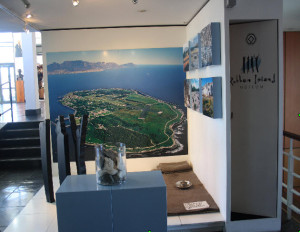 ult, I found myself revisiting the place where “the bad people” were kept, only now I realized that some were not so bad after all.
ult, I found myself revisiting the place where “the bad people” were kept, only now I realized that some were not so bad after all.
I bought a ticket for the tour some days before the trip, (advisable, as they fill up quickly) and took time out to examine the display at the Nelson Mandela Gateway at the V&A Waterfront in Cape Town.
There were many photographs of the political dissidents, the calls for boycotts, the anti-apartheid marches and there was also a prison cell that had been reconstructed for the purposes of the exhibit. I strongly recommend a visit to this exhibit before going to the island as it helps to contextualize the experience.
The trip began, as in times of old, with a boat ride from Cape Town docks, but this time instead of my uncle meeting us, we had a pleasant tour guide who told us jokes on our bus trip, whilst pointing out various sights on the island. Our bus was parked under a sign that said: “Welcome. We serve with pride.” I wondered if that sign had been there when Robben Island had been a prison as it was so sharply incongruous to the environment. I hoped not.
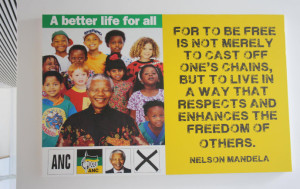 Robben Island has had a long history. First as a lighthouse to warn ships of the VOC, the Dutch East India Company (Verenigde Oostindische Compagnie), of the rocks that surround the island. But since the end of the 17th century, Robben Island has been used for the isolation of (mainly) political prisoners. The island was also used at various times as an animal quarantine station, a home for slaves, a leper colony, a hospital for the mentally ill and as a prison for French Vichy prisoners of war.
Robben Island has had a long history. First as a lighthouse to warn ships of the VOC, the Dutch East India Company (Verenigde Oostindische Compagnie), of the rocks that surround the island. But since the end of the 17th century, Robben Island has been used for the isolation of (mainly) political prisoners. The island was also used at various times as an animal quarantine station, a home for slaves, a leper colony, a hospital for the mentally ill and as a prison for French Vichy prisoners of war.
First we saw the Leper Graveyard and then house where Robert Sobukwe (Founder of the Pan Africanist Congress) had been kept separate from the other political dissidents.
It seems that Robert Sobukwe had special status in the prison. He was kept in solitary confinement at all times, but allowed certain privileges including access to books, being permitted to study, being permitted to wear civilian clothes, and being permitted bread. His children were allowed to visit him and they had their own bedroom in his “house”. Robert Sobukwe was convicted of incitement for demonstrating against and defying the Pass Laws, and in particular, for his connection to the PAC demonstration (although he was not present) which became known as the Sharpeville Massacre.
The notorious Pass Laws required black people to carry a pass book at all times when outside their compounds or designated areas, and were designed to limit severely the movements of the non-white population. This legislation was one of the dominant features of the country’s apartheid system.
Sobukwe was sentenced to three years in prison. After serving his sentence, he was moved to Robben Island for internment, as a new law called the General Law Amendment Act had been passed, which permitted his imprisonment to be renewed annually at the discretion of the Minister of Justice. This procedure became known as the “Sobukwe clause” and Robert Sobukwe was the only person whose imprisonment was extended under this clause. Imagine how special one has to be in order for parliament to pass a law just for you!
We also learned from our tour guide that the American politician and Pastor, Andrew Young, had fostered Sobukwe’s children in the USA, while Sobukwe had been in prison.
Our tour continued to the lime quarry where the political prisoners had worked. At the entrance to the quarry we saw a small cairn, and learned its history. In February 1995, (the landmark change of government was in 1994), about one thousand former political prisoners gathered again on Robben Island, but this time as free men, and to mark the occasion, each one placed a small stone from the quarry in a pile, making a small memorial to their years of hardship and struggle.
As we continued on our bus ride, we were shown a church, a hospital, a school and a mosque, and realized that far beyond our expectations, the island had supported a whole community. We duly arrived at the prison and tumbled out of the bus for our tour of “the real thing”. We were excited and filled with high spirits and I wondered for a moment where my heart would have been had I not been a tourist.
Inside we found grey walls. It was cool at midday; it was clear that at midnight it would be very cold. The communal cells were large and each had a bathroom attached.
Here we met our prison tour guide, Derrick Basson, a former political prisoner who served time on Robben Island for sabotage.
Derrick was very patient, humble and remarkably, not bitter. He answered all the insensitive questions calmly and without anger. In addition he explained the grading of the prisoners by race and also the diets that varied due to the racial classification of each prisoner. One of the curious facts he told us was that black prisoners were not given bread. As they were Africans their “natural” food was considered to be maize meal. The mixed race prisoners were allowed bread as they were considered to be more western or European and less African. The black Africans were also not allowed jam or syrup. I suppose you do not need jam if you have no bread.
Then I remembered that Robert Sobukwe, in spite of being black, was allowed to have bread, and it struck me that this must have been because he had been a university professor, and since this is a very “European” and non-tribal job, maybe he was considered eligible to receive bread.
Derrick further explained how prisoners slept on mats on the floor and how 5 blankets had not been enough to keep them warm at night. I suddenly remembered an interview with a former Alcatraz inmate who spoke of the extreme cold and of how prisoners had learned to sleep with only their elbows and knees touching the floor, hands locked behind the head. I became very grateful for my duvet.
We were told that in the beginning the political prisoners had been kept with the ordinary criminals, but later on, they were, thankfully, given their own “wing” and kept together. They came to call this place “The University” as they learned many things from each other and many of them also obtained degrees while in prison.
Derrick then took us to a yard where the prisoners had chopped rocks and turned them into stones, day after day in the sun. They were told that these rocks were used for roads built on the island, but no one seemed to know if this was true or not.
We were then taken to Nelson Mandela’s cell. Mandela was a militant anti-apartheid activist, as well as the co-founder and leader of the armed wing of the African National Congress (ANC), Umkhonto we Sizwe or “Spear of the Nation”. He was arrested in 1962 and convicted of sabotage, (amongst other charges), after he admitted to manufacturing explosives and acts of public violence, and was sentenced to life imprisonment. Mandela served 27 years in prison, 18 of these on Robben Island. After his release, he served as President of South Africa from 1994 to 1999.
My very first impression was of how small the cell was. No, not small, tiny. And then I thought that at least he could stand up and lie down in it, but not much more than that. At least it was larger than the dreadful box that I had heard was used in China. But there was no toilet. Just a metal bucket with a lid. At least a lid. And no tap, so no water. And if you are thirsty during the night, what should you do? And of course there was no electrical socket and no radio nor TV. And all I could think of was 27 years. TWENTY SEVEN YEARS! There was no door handle on the inside. The door was only operational from the outside, not unlike a cage. I remembered that Nelson Mandela had once remarked that the hardest and most traumatic experience he endured whilst on Robben Island for all those years was that he never ever saw, or even heard, a child. Can you imagine that? Now he insists on being photographed with children, whenever possible.
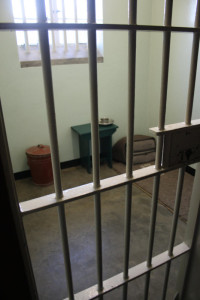 And then it was all over. We walked out to the yard, Derrick took us to the exit, and we said our goodbyes.I felt an odd mixture of elation and depression. Very happy that I had been to a UNESCO World Heritage Site of such importance, happier still that it was no longer a prison, and most happy that I was leaving. Yet also depressed and ashamed because of the suffering this place represented.
And then it was all over. We walked out to the yard, Derrick took us to the exit, and we said our goodbyes.I felt an odd mixture of elation and depression. Very happy that I had been to a UNESCO World Heritage Site of such importance, happier still that it was no longer a prison, and most happy that I was leaving. Yet also depressed and ashamed because of the suffering this place represented.
Duly subdued, we gratefully returned to our boat to ponder our feelings of inspiration and shock, enjoy the beautiful sunset cruise back to Cape Town, and watch a school of dolphins at play in the sea.
Remember when planning a visit to Robben Island, that the tours don’t always run on time. There was no snack bar on the boat. Our boat was 1 hour late in leaving Cape Town harbour and then we were rushed through our tour, which was a pity as there was too little time for questions.
A suggestion would be to make no appointments after the visit as the timing can vary, and also, take a snack pack. A sun hat and sun block are also good ideas.
Ferries depart (supposedly) at 9am, 11am, 1pm and 3pm, weather permitting, from Nelson Mandela Gateway, at the V&A Waterfront in Cape Town. Tickets costs are R230 for adults and R120 for children (U/18). Telephone: +27 (0)21 413 4200
Fax: +27 (0)21 419 1057
Canada Edmonton: Harry Potter Exhibition
Harry Potter fans in Canada or anywhere else who wants to travel there, can see inside the famous wizard’s world, Harry Potter: The Exhibition opened at TELUS World of Science – Edmonton.
You can see the amazing craftsmanship behind hundreds of authentic costumes and film props from all 8 of the Harry Potter films. The show immerses fans in the experience as they get a firsthand view of authentic artifacts displayed in detailed settings inspired by the film sets, including the Great Hall, Hagrid’s hut, the Gryffindor™ common room, and other settings from the films.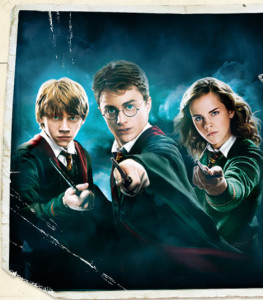
While touring through the exhibit space, discover iconic items such as Harry’s original wand and eyeglasses, the Marauder’s Map, Gryffindor school uniforms as well as costumes worn at the Yule Ball. Enter the Quidditch™ area and toss a “Quaffle”, pull your own Mandrake, encounter Buckbeak™ the Hippogriff and even a giant Acromantula spider.
Edmonton is the 1oth stop for the exhibition which is concluding its global 5-year tour. Harry Potter: The Exhibition debuted in Chicago in 2009 and has since been touring the world with most recent stops in Tokyo, New York and Singapore. The exhibition has expanded in recent years to include artifacts from all eight Harry Potter films.
Dates: until Mar 9, 2014
www.telusworldofscienceedmonton.com
Argentina: Walk in the Footsteps of the Pope
Pope Francis (born Jorge Mario Bergoglio) was born in the Flores neighborhood of Buenos Aires. You see the church where he worshipped and where he felt a calling to devote his life to God.
Twice on Saturdays and Sundays, a 3-hour FREE government-sponsored Papal Circuit bus tour takes you past 24 landmarks of his life: the tree-shaded street of his middle class childhood home (531 Membrillar, where his parents, Regina Maria Sivori and Mario Bergoglio raised their 5 children), the plaza where he played soccer, his school, his barber (where he also received pedicures!), his favorite newsstand, and the Metropolitan Cathedral which he presided over as an archbishop.
